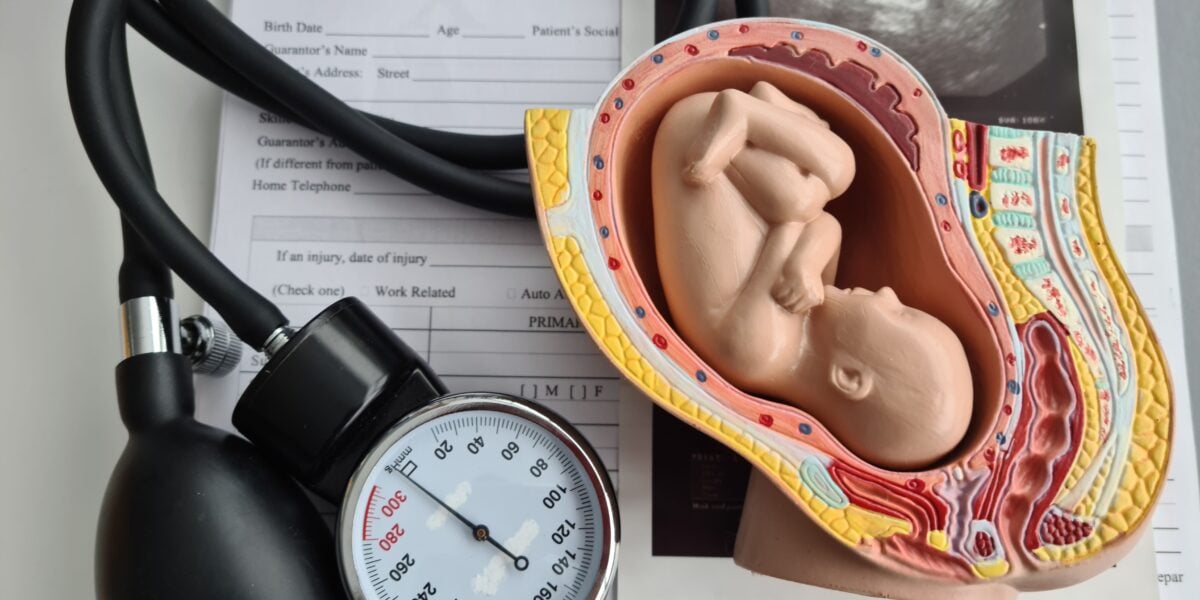This essay was reprinted with permission from Public Discourse: Ethics, Law and the Common Good and was written by Ligia De Jesus Castaldi.
Abortion rights dogma can obscure human reason and harden the human heart so much that the same person who feels empathy for animal suffering can lack compassion for unborn children who experience lethal violence and excruciating pain in abortion.
In Beating Hearts: Abortion and Animal Rights, Sherry F. Colb and Michael C. Dorf, two Cornell Law professors, rationalize their simultaneous support for animal rights and opposition to the rights of unborn humans. The authors, a man and a woman who live with their “two human daughters” and three “adopted” dogs, are decidedly pro-choice. They are also active members of the animal rights movement.
They do recognize, however, that not all members of the animal rights movement share their pro-choice stance, and they cite an article by Mary Eberstadt as illustrating the pro-animal, pro-life position.
When it comes to animal rights, their beliefs are as radical as they get. In addition to opposing animal cruelty, a view that they acknowledge to be uncontroversial and shared by the majority of the population, they also believe all animal farming is a form of violence, even if the animals are given humane treatment. They believe it is immoral to eat meat, to consume eggs or milk, and to use leather, wool, or any other animal products. They hold that veganism is morally required, even for children.
Throughout the book, they maintain that man is simply another animal enjoying no greater moral status, no uniqueness, only some differences in degree of evolution. The idea that no “crucial factual difference” or difference “in kind” exists between humans and animals—a claim that many contemporary anthropologists would dispute—leads Colb and Dorf to conclude that humans and animals are equal in moral status. Thus, they argue, neither human health nor life is more important than animal life.
What Is the Basis of Human Rights?
In order to reach the desired conclusion that abortion is morally permissible while animal use is not, the authors argue that membership in the human species is not the necessary condition for moral rights. Instead, they contend, sentience—the ability to feel pleasure and pain—should be the moral and legal basis for entitlements.
Although they are law professors, the authors seem to forget that the recognition of humanity alone as a basis for human rights entitlement has long been expressly recognized in international human rights instruments to which the United States is a party, such as the Universal Declaration of Human Rights.
Their reliance on sentience as the only moral criterion seems to be particularly inspired by utilitarianism, notably the writings of Peter Singer. They do not provide any legal justification for sentience as a legal standard, however, and reject fetal pain laws and partial-birth abortion bans, even though they could actually provide support for their own case in favor of sentience.
The rights of sentient animals, the authors argue, should only be limited by considerations of “necessity,” which they present as virtually nonexistent. They reject the idea that eating animal products is necessary for human health; they believe all dietary consumption of animal products is, instead, harmful.
Animal medical experimentation, according to the authors, is also unnecessary. Even where an experiment on an animal might produce a breakthrough in the treatment of an otherwise untreatable human disease, it is, in their opinion, morally unacceptable in almost every instance because it uses the lives of other sentient beings “as instruments.”
The rights of sentient fetuses, however, are held to a very different standard under the authors’ moral theory. Obviously, in their view, the human embryo’s lack of sentience in the beginning of pregnancy would morally justify any and all abortions, regardless of necessity or the lack thereof.
In a lecture on this book, Professor Colb summarized her view by stating that, before sentience, “there’s no one there.” A logical application of their own theory would lead to the conclusion that abortion of sentient fetuses would be morally illegitimate unless “necessary,” which would make many (if not all) such abortions morally unacceptable. Yet the authors deliberately avoid that conclusion.
They explore a variety of exceptions to criminal abortion laws (e.g., the life of the mother, rape or incest, fetal disability) and admit that, if one views pregnancy as mere coexistence, a situation in which the woman and her unborn child are like “equally entitled co-occupants of a lifeboat,” then no such exceptions would be morally acceptable. The authors cite Catholic teaching on indirect abortion and the principle of double effect as consistent with this ethic.
But they reject that understanding of pregnancy. Instead, they opt for the familiar pro-choice/feminist view that pregnancy constitutes an affirmative burden or imposition on a woman. As they put it, pregnancy is “reproductive servitude” analogous to that of dairy cows or laying hens.
Predictably, that definition leads them to conclude that, regardless of a woman’s reasons to abort, “abortion is always necessary to vindicate a woman’s interest in ridding herself of an unwanted pregnancy,” to protect “women’s bodily integrity.”
By expanding their necessity exception so broadly, the authors completely lose sight of their own proposal in favor of sentience as a relevant moral or legal criterion and render it meaningless when applied to the human fetus. Even though they grant that some abortions may be morally illegitimate and that a woman having an abortion “has some moral obligation to abort as soon as possible,” if only in part to avoid fetal sentience, they categorically resist the conclusion that any abortions should be legally prohibited.
They identify only one, very limited, exception: where an abortion involved the intentional killing of a viable fetus that could survive outside the womb (e.g., in an artificial womb), but argue that even then, termination of pregnancy should be legally allowed.
The authors declare that they do not foresee a world in which abortion may ever become illegal and that they would not like to live in such a world. They do, however, foresee and like the idea of a world in which all animal consumption and animal products would be fully banned by law. They believe that this will eventually occur after most of the population becomes vegan.
The book then criticizes animal rights support for humane animal farming as inconsistent with the philosophical tenets of the movement, arguing that killing an animal, no matter how humanely, harms it and deprives it of a future life. They also claim that “sentient animals’ lives belong to them,” not to others, and that animals have “an interest in continued sentience,” “future-oriented behavior,” and even a “life plan.” They do not admit that the same can be said of unborn children.
The authors express moral repugnance toward practices that cause unnecessary harm to animals, such as dogfighting and vivisection. They are disgusted by the eating of “animal flesh and hormonal secretions,” and are appalled to find out that some hospital menus include egg-based French toast and chicken.
They show little sensitivity, however, for human fetuses subjected to the barbaric partial-birth abortion procedure.
They deplore the sentimentality of Justice Kennedy’s majority opinion in the Gonzales v. Carhart Supreme Court decision that upheld a ban on partial-birth abortion, and criticize the inclusion of detailed descriptions of the procedure’s violence and resulting fetal suffering in sentient fetuses.
The book ends by applauding the extravagant proposal that domestic animals should be granted citizenship rights (with some limitations) and other animals be granted an alternative legal status, including territorial sovereignty for wild animals. Other proposals are scattered throughout the book without much development. They propose, for example, that the government should provide aid to needy animals in the form of healthcare and other benefits, just as it seeks to make healthcare affordable for its citizens.
The book, however, makes no proposal to grant any similar legal rights or status to the sentient human fetus, even beyond the context of abortion. The stark double standards applied to animals and human fetuses indicate that the authors did not sincerely expect to adhere to the argument for sentience as a criterion to assess either the morality or the legality of abortion, only that of animal rights.
Ultimately, the authors do not make any new arguments for abortion rights, and they fail to make a logical or persuasive case for the compatibility of animal rights and abortion rights advocacy.
What the book mostly does is expose the inherent contradictions of the pro-choice animal rights position.
Sadly, the book also illustrates the extent to which abortion rights dogma can obscure human reason and harden the human heart to the point that the same person who feels empathy and sensitivity for animal suffering can utterly lack compassion for the lethal violence and excruciating pain that unborn children experience when their lives are ended in the womb.
Ligia De Jesus Castaldi is associate professor at Ave Maria School of Law.













